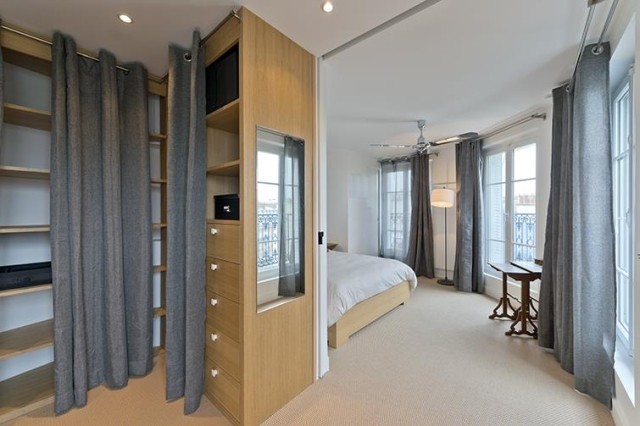Apartment living looks a little different when you have a pet. Your living room might double as a cat’s playground. Your balcony may be a makeshift back yard for puppy potty training. And what once was an empty corner of your bedroom might now be a pet’s favorite napping spot.
Though some of these shifts may be inconvenient, they’re well worth the companionship and love that comes with pet ownership. However, one way to lessen the hardships of renting an apartment with a pet is to choose one well-suited for apartment living.
If you’re considering bringing home a new pet, use this guide to discover which pets thrive in an apartment setting. From small dog breeds to more exotic pet options, here’s our list of the best pets for apartment living.
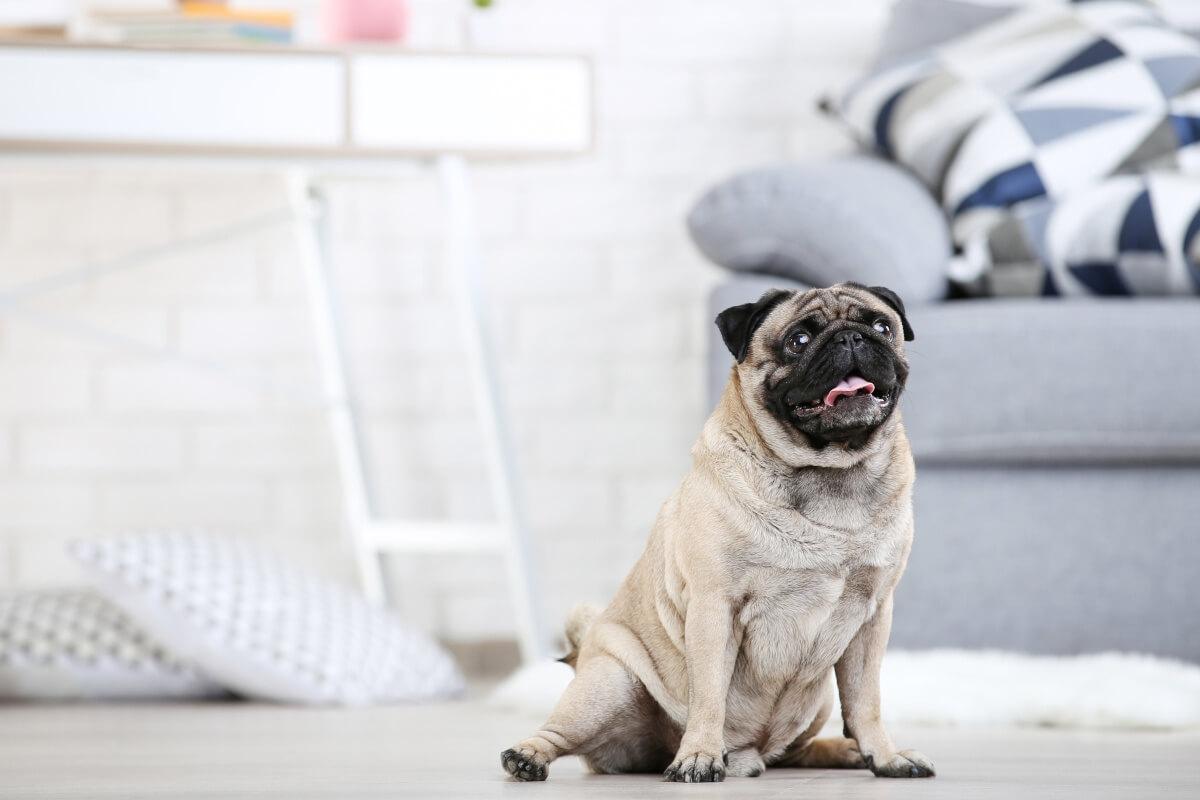
Top Dog Breeds for Apartment Living
If you’re looking for an affectionate and loyal companion to be attached to your hip, a dog is the pet for you. Though they’re the most high maintenance on this list, dogs by far create the strongest emotional attachments. They are known as a man’s best friend, after all!
Because dogs require a lot of attention, exercise, and mental stimulation, many apartment dwellers assume they’re not well-suited for apartment living. However, with the right breed and proper care, dogs can thrive in apartments just as well as they do in houses. If you’re considering getting a dog, here’s a list of some of the best apartment-friendly dog breeds:
Best small dog breeds for apartment living:
- Pug
- Shih Tzu
- Bichon Frise
- Chihuahua
- Lhasa Apso
Best large dog breeds for apartment living:
- Standard Poodle
- Irish Wolfhound
- Mastiff
- Greyhound
- Great Dane
Cat Breeds That Thrive in Apartments
Cats, of course, are another popular option among renters. These furry, four-legged creatures are similar to dogs, only they’re much more low-maintenance. Cats are smaller, quieter, and more independent than their canine counterparts. They’re perfect for busy apartment dwellers who aren’t home often. Not to mention, they also don’t require much space, just as long as there’s room for a cat tree and litter box.
If a cat is best suited for your renter lifestyle, here’s a list of breeds that do well in apartments:
- British Shorthair
- Persian
- Maine Coon
- Ragdoll
- Exotic Shorthair
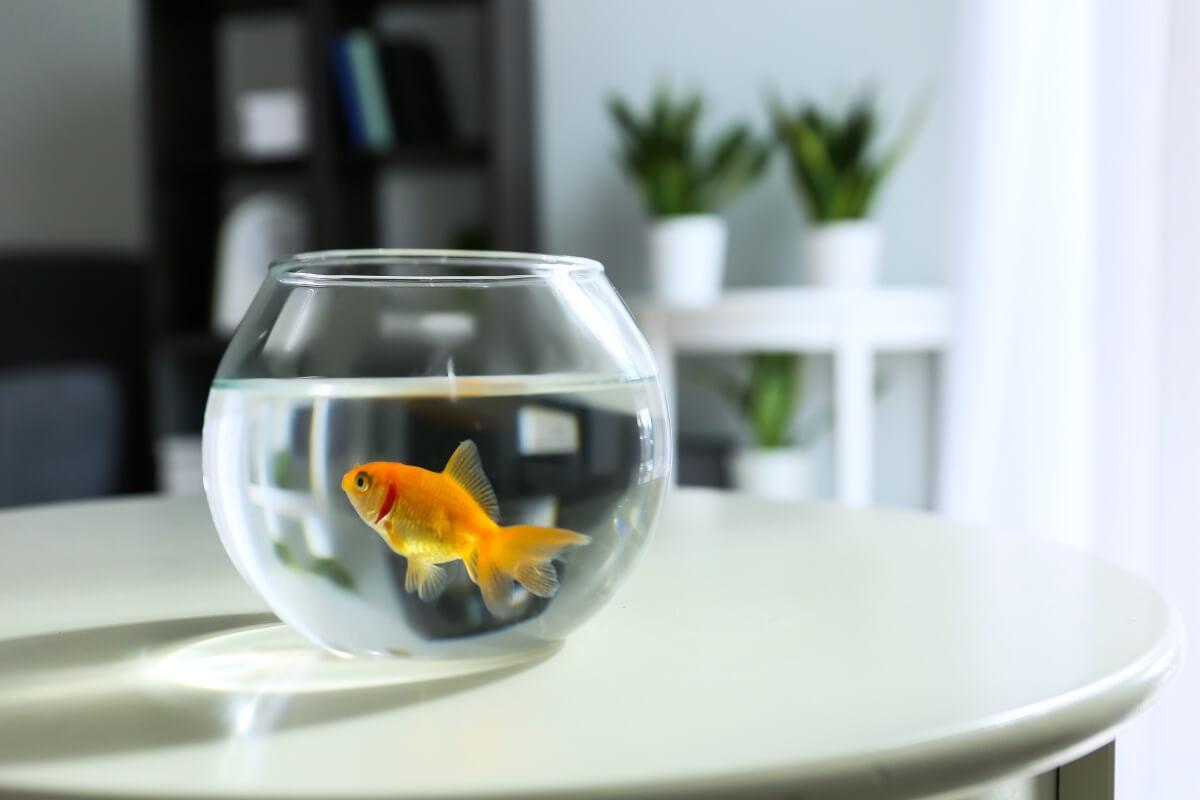
Low-Maintenance Fish for Small Spaces
Though they might not be the most exciting option, fish are great for apartment renters. These pets are perfect for people of all ages, lifestyles, and budgets, as they don’t require much supervision or upkeep.
When owning a fish, your primary responsibilities will be to feed the fish and clean their dwellings. If they’re in a fish tank or aquarium, it’s important to regularly check the pH balance, water hardness, and nitrite/nitrate levels to ensure proper living conditions. This should be done about every two weeks, depending on the type and number of fish.
If you’re looking for low-maintenance pets for small apartments, here are some fish types to consider:
Best freshwater fish for apartment living:
- Goldfish
- Guppy
- Betta fish
- Angelfish
- Neon Tetra
Best saltwater fish for apartment living:
- Clownfish
- Klein’s Butterflyfish
- Hawkfish
- Green Chromis
- Banggai Cardinalfish
Birds That Can Make Great Apartment Companions
Birds are another great low-maintenance pet for apartment living. They take up little space, require minimal care or supervision, and are budget friendly. The only caveat is that birds can be noisy, which may not sit well with next-door neighbors. However, all squawks and chirps aside, here are some suggestions for apartment-friendly bird breeds:
- Parrot
- Cockatiel
- Domestic Canary
- Parakeet
- Lovebird
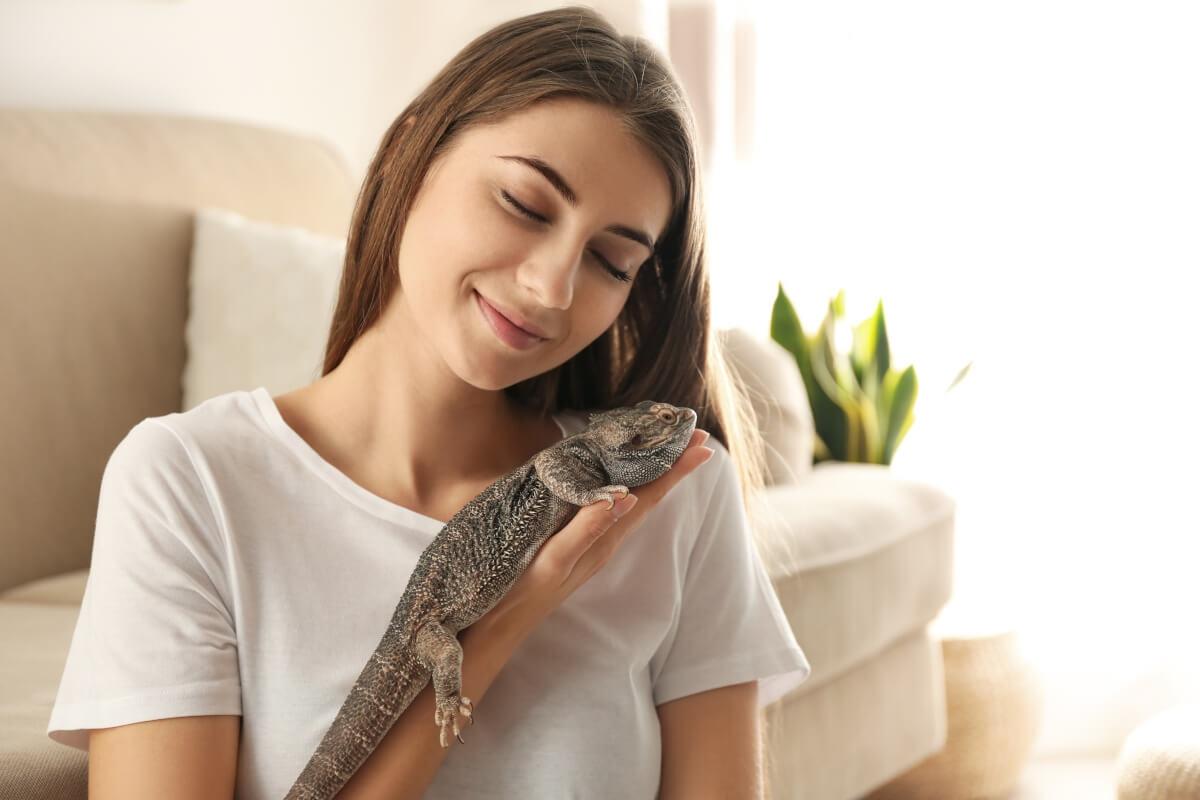
Exotic Pets Suitable for Apartments
If you want to go the exotic route, there are several apartment-friendly animals you can consider. Though they may originally come from a jungle or sandy beach, some exotic creatures are surprisingly well-suited for apartment living. Here are some popular, unconventional pet options to consider:
Snakes
They might slither, slide, and hiss, but snakes actually do make for good apartment pets. While they may be threatening to some people, they’re typically quiet creatures who like to keep to themselves. As pets, they’re pretty low-maintenance, requiring food only once a week and a small, space-friendly enclosure to inhabit.
Hermit crabs and shrimp
Hermit crabs and shrimp are great options for apartment dwellers looking for low-maintenance pets. Hermit crabs thrive in an air-filled tank with sand, shells, climbing toys, and food and water bowls, and they’re surprisingly social and active, especially in the evenings. Shrimp, on the other hand, require a small tank with live plants, hiding spots, and a filter. They are peaceful creatures that make excellent companions for smaller fish or other aquatic animals.
Sugar gliders
Sugar gliders can live 10-15 years and require attention, space, and a special diet, making them better suited for experienced pet owners. Early bonding is crucial, as older sugar gliders tend to be wary of strangers. For apartment renters, providing a secure hanging pouch in their enclosures helps them feel safe and comfortable in smaller spaces.
Hedgehogs
If you want a rabbit or a guinea pig with a unique twist, a hedgehog is a great option. These small, furry creatures are quiet, produce little dander, and are well-equipped for small spaces. They’re also primarily nocturnal, meaning you won’t have to pay much attention to them throughout the day. They do like to play and explore, so make sure to provide them with tunnels and obstacles in their enclosure.
Lizards or geckos
Lizards, geckos, and other adjacent reptiles like bearded dragons are good pets to have in apartments. They don’t require any exercise or attention. All they really need is an enclosed habitat, adequate food, and certain levels of heat control. Since they are cold-blooded, it’s important to provide them with a warm and cool side in their enclosure so that they can regulate their body temperature.
It's important to note that before committing to exotic pets like the ones listed above, you should check your apartment’s pet policy. Some communities may restrict or ban exotic animals, so verifying the rules beforehand can save you from potential issues. Always make sure your living situation is suitable for the pet you plan to adopt.
Small and Cuddly Pets for Cozy Apartments
Lots of renters have their sights set on small, cuddly pets for apartments. These are going to be your hamsters, mice, guinea pigs--- anything that’s small, four-legged, and potentially enjoys running on a wheel. If you’re a rodent-lover and are looking for a miniature, cuddly companion, here are a few viable pet options:
Hamsters, guinea pigs, and rats
Small pets like hamsters, guinea pigs, and rats are perfect for apartment living. They only need a modest enclosure and a bit of human interaction each day, making them relatively low-maintenance companions. One interesting trait of these animals is their nocturnal nature—they come alive just as you're winding down for the night. Light sleepers, take note!
Guinea pigs and rats, in particular, are highly social and thrive in pairs or small groups. To keep them happy and healthy, be sure to schedule some playtime before bed.
Popular Small Pets to Consider:
- Syrian Hamster
- Abyssinian Guinea Pig
- Standard Rat
Rabbits
Rabbits, like cats and dogs, can be trained to use a litter box or even walk on a leash. They’re excellent apartment pets thanks to their compact size and preference for living in an enclosure, which won’t take up much space in your home. Just be sure to clean their enclosures regularly to prevent any unpleasant odors.
Since rabbits’ teeth grow continuously, they must chew to keep them healthy and manageable. Providing plenty of toys and hay will help satisfy this natural need. Rabbits are most active in the mornings and evenings, making them ideal pets for those with busy daytime schedules.
Popular Rabbit Breeds for Pets:
- Mini Rex
- Dutch Rabbit
- Holland Lop
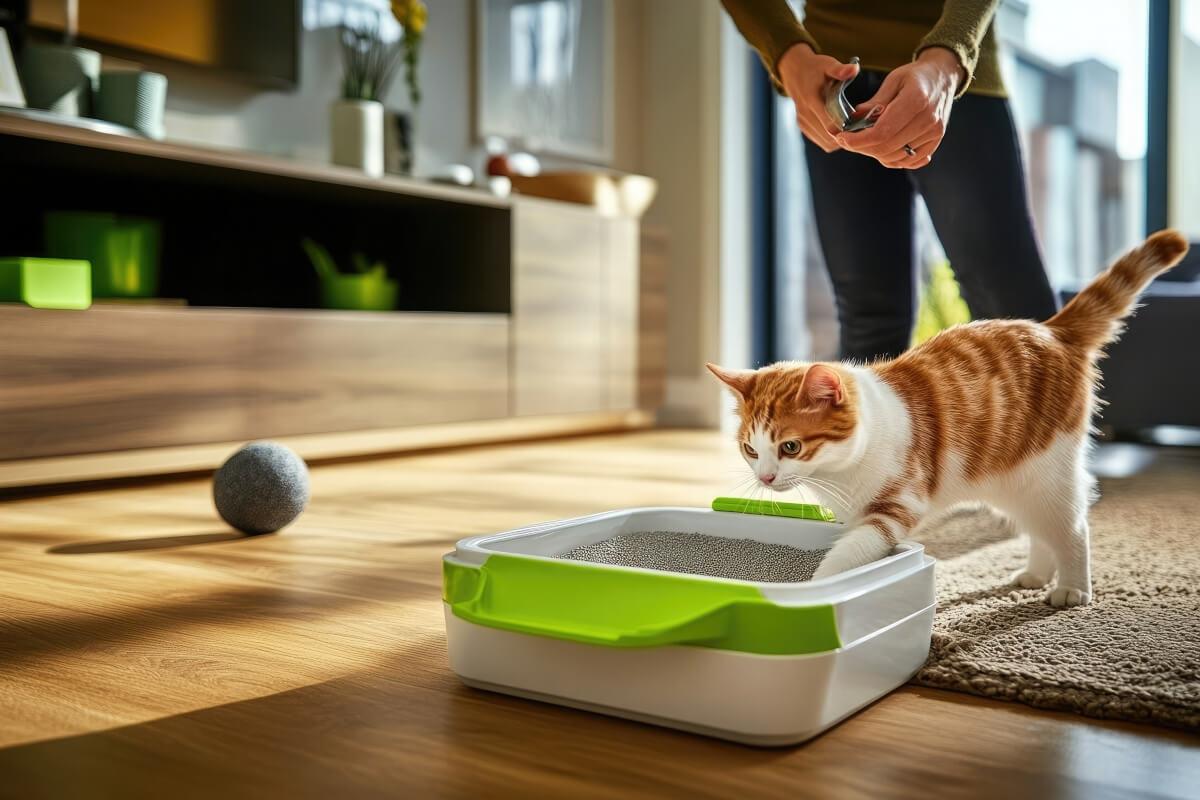
Tips for Choosing the Right Pet for Your Space
Now that you know all the best pets for apartment living, it’s time to decide. Which furry friend are you going to choose? For some, the answer is obvious. However, if you’re still undecided, here are some tips to help you choose the right pet for your space:
Asses your apartment’s space and layout
Before bringing home a pet, it’s important to consider your space and layout. For instance, if you live in a small studio apartment, you may not have the necessary space for a large dog. Instead, you might opt for a smaller animal with less energy and exercise needs, like a cat or rabbit. Along with square footage, you may also consider if your apartment has an outdoor space, like a balcony or patio, for your pet to enjoy.
Consider lifestyle compatibility
Next, consider how your lifestyle will align with a pet. If you’re not home often, you may be better fit for a low-maintenance pet like a fish, guinea pig, or bird. However, if you’re a homebody, you may have more time to bond with a dog or cat.
Other things you might consider are your physical activity, daily routines, and socialization habits. If you have guests over a lot, you’ll need a pet that is good around strangers. If you love outdoor exercise, a dog might be the perfect companion for your runs or hikes. Accounting for these lifestyle factors will help you decide which pets can easily integrate into your daily routine.
Read your apartment’s pet policy
Lastly, make sure to double-check your apartment’s pet policy. Some apartments have breed or size restrictions, and most will require an additional pet deposit or monthly fee. Make sure to check these policies before bringing a pet home. Otherwise, you could risk getting in trouble with apartment management or even facing eviction.
Caring for Pets in an Apartment Setting
All pets, regardless of their needs, deserve a caring and supportive living environment. Providing a suitable home for your furry friend can be more challenging in an apartment, but it’s entirely possible with the right approach. Here are some tips to help you create a comfortable and nurturing space for your pet:
Establish a routine for your pet
Like humans, pets thrive on a routine. Whether that means having consistent feeding times or regular walks, animals love being on a schedule. As you integrate your pet into your home, create a routine that works for both of you. Doing so will help your pet feel more comfortable in their new environment and prevent any unwanted behavior due to anxiety or confusion.
Invest in the right supplies
Creating a pet-friendly apartment is all about having the right supplies. Depending on the type of pet you have, this could include anything from a plush dog bed to a large fish tank. Before your pet moves in, make sure you have everything needed to keep them happy and healthy. Of course, that means buying food and pet accessories, but it also means having the proper space and storage for those items.
Maintain a clean and safe environment
Being a pet owner comes with its share of responsibilities -- one of which is maintaining a clean and safe home. Pets can be messy, especially if they shed or have an occasional accident, requiring regular cleaning to keep your living space fresh. Additionally, pets are often unaware of potential dangers in their environment.
As a responsible owner, it’s essential to ensure your home is clean and hazard-free. Watch out for risks like exposed wires, sharp edges, or toxic substances. Store cleaning supplies and harmful materials securely out of reach. Make it a habit to vacuum or sweep frequently to keep pet hair under control and clean up spills promptly to prevent slips or falls.
Find a Pet-Friendly Apartment on Apartments.com
Owning a pet looks a little different when you live in an apartment. With limited space, shared walls, and pet policies to follow, there are certain obstacles you might face when adopting an apartment pet. However, with the right resources, renting with a pet can be an easy feat. And where will you find these resources? Right here at Apartments.com!
Take advantage of our advanced search filters to discover top-rated, pet-friendly apartment listings in your area. Get educated on pet rent, pet deposits, and all the financial obligations of apartment pet living. Do all your pet prep on Apartments.com and find the perfect pet-friendly rental for you and your furry companion!
This article was originally published on April 18, 2016, by Lauren Ross.
FAQs
What pets are good for apartments?
Small pets like cats, small dog breeds, fish, or even hamsters make great apartment companions due to their size and lower space requirements.
Do apartments allow small pets?
Many apartments allow small pets, but policies vary. Always check your lease agreement or speak with your landlord to confirm.
What is the easiest pet to maintain?
Fish and small pets like guinea pigs or hamsters are often considered low maintenance, requiring simple care routines and minimal space.




